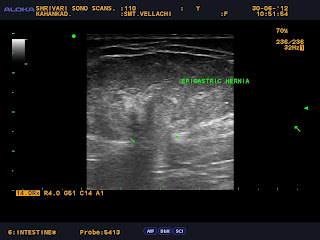 |
The sonographic diagnosis of acute appendicitis is based on identification of a tubular, noncompressible, aperistaltic bowel loop, which demonstrates a connection with the cecum and a distal blind end, with a diameter greater than 6 mm |
 |
| Perforated appendix with local peritonitis |
 |
| inflammed appendix with echogenic edematous omentum around |
 |
| acute appendicitis |
 |
| Retrocaecal appendix |
 |
| retrocaecal appendix showing target sign. |
 |
| Inflammed tip of the appendix. |






































